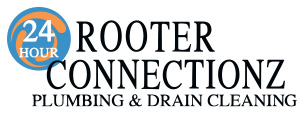Among the most important components of your home’s plumbing system, the main sewer line holds a special place. Responsible for connecting all your home’s drain lines to a single line that runs out of the home and to your public utility supply, the main sewer line sees some of the most action of any pipe or drain in your home — and can be one of the most demanding to fix if problems take place within it.
At 24 Hour Rooter Connectionz Plumbing & Drain Cleaning, we’re here to offer a variety of services that assist in keeping your sewer line functioning optimally, from basic drain cleaning and repair methods through main sewer cleanout, sewer line repair and many other themes. It’s also important for homeowners to have a bit of knowledge on this system too, though — where it’s located, what might cause problems within it, and what the signs of these problems could be so you can quickly get our plumbers on the job if any of them happen to arise. Here’s a primer on each of these important areas.
Main Sewer Line Basics and Location
First and foremost, let’s go over exactly what the main sewer line is and where it’s located. This line runs from the piping in your home and out to your public utility supply, located in an underground line that runs along streets and through neighborhoods. It supplies all houses in the area with their wastewater — or drain water — which then gets sucked into a larger line that can be hooked up to main sewers for large cities, or local treatment plants for smaller communities.
More precisely, your home’s main sewer line will be connected to the city or town piping by a connection called a ‘street lateral’. This pipe comes directly from your home and down along the side of your house, usually covered up by landscaping so it’s not immediately visible. It leads out to this junction point with your local sewage system, where it then get funneled to the sewage line.
Common Reasons for Main Sewer Line Clogs
There are several possible reasons why your sewer line may clog, some of which are easily avoidable. Here are a few of the most common:
- Repeated flushing of improper products (hygiene products, food, wipes, etc.) down the toilet
- Grease and oils being regularly poured down the drains and into the main sewer line
- Large amounts of hair getting caught up in the piping and causing a clog over time
- Tree roots getting into the line and causing blockage
- Extreme changes in temperature
Now that you know all the basics on a sewer line and why it might become clogged, our next sections will go over some of the most common signs that such a clog is occurring, plus what you should do if you notice any of them.
Low Water Pressure
If you’ve noticed a sudden, major drop in water pressure inside your home, there’s a strong chance that your main sewer line is clogged. You’ll want to get our 24 Hour Rooter Connectionz Plumbing & Drain Cleaning professionals on the job right away; it could be something as simple as grease buildup affecting the flow, or it may be much more severe like multiple blockages. You may also see water draining from a showerhead or bathroom faucet when the washing machine is running, another sign of low pressure.
Water Backups in Multiple Fixtures
If you have a backup in just a single sink or toilet, this could be limited to just that drain and due to issues like a minor blockage that’s easily remedied. However, if you notice multiple water backups happening simultaneously, then your main sewer line is probably the culprit.
In addition to signs like back up in sinks and toilets, you may also notice sewage smells coming from drains, see water coming up from floor drains, or simply see standing water where it shouldn’t be — a sure sign that something serious has occurred with your main sewer line. If you flush your toilet and see water coming up from a basement drain, for instance, this is usually a main line issue.
Slow Drains
Down similar lines, a single slow drain might not be cause for much concern, especially if there’s a simple reason for it; multiple such slow drains, on the other hand, certainly will be. This can be another sign of something going on with your main sewer line, and you’ll want to get our Rooter 24 team on the job right away to make sure your home’s plumbing systems are in good working order.
Poor Odors
Once again, a sewer line issue isn’t the only potential cause of poor plumbing odors — if these are in just a single location, you should look for other explanations first. But if you’re smelling a sewage odor coming from most or all of your plumbing fixtures, then this will be a clear sign that something has gone wrong with your main sewer line.
Flooding Yard
Finally, has water that’s clearly not coming from your sprinkler or hose system begun pooling or collecting in your yard, especially above the area where your main sewer line runs underground? This often means damage has occurred to the line itself, such as a tree root creeping into the line. You’ll want to get in touch with our team at Rooter 24 for a thorough analysis and repairs as soon as possible, to ensure that your sewer line is repaired quickly and doesn’t continue to leak.
For more on spotting the signs of a potential main sewer line clog that indicate a need for repair or cleaning, or to learn about any of our drain cleaning or main sewer line services, speak to the staff at 24 Hour Rooter Connectionz Plumbing & Drain Cleaning today.

